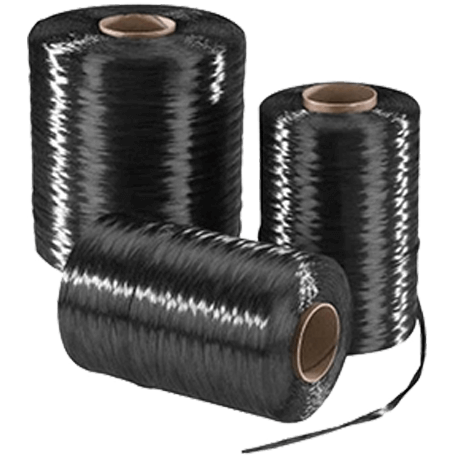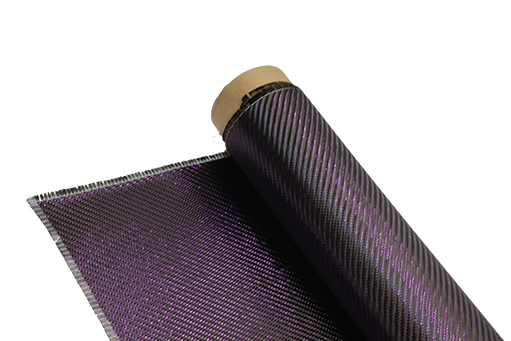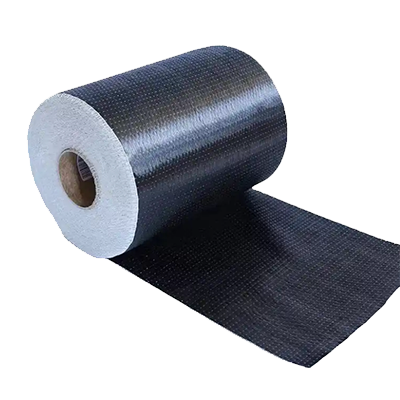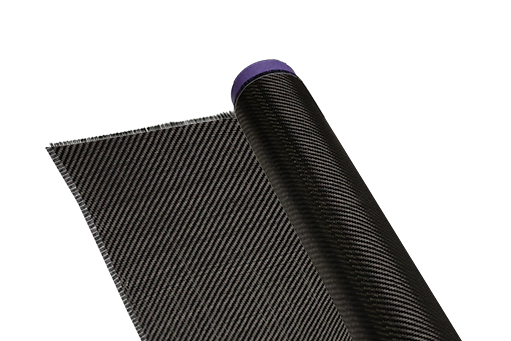¿El tejido de sarga afecta la amortiguación de vibraciones de la fibra de carbono?
-
Tabla de contenido
“Tejido de sarga: mejora de la amortiguación de vibraciones de la fibra de carbono para un rendimiento superior”.
Introducción
El tejido de sarga es una estructura textil popular utilizada en la producción de compuestos de fibra de carbono, que se caracteriza por su patrón diagonal que mejora la flexibilidad y la resistencia. Esta técnica de tejido puede influir significativamente en las propiedades mecánicas de los materiales de fibra de carbono, incluyendo su capacidad de amortiguación de vibraciones. La amortiguación de vibraciones se refiere a la capacidad de un material para absorber y disipar la energía vibratoria, lo cual es crucial en aplicaciones que abarcan desde la industria aeroespacial hasta la automotriz. Comprender el impacto del tejido de sarga en las características de amortiguación de vibraciones de la fibra de carbono es esencial para optimizar el rendimiento en diversas aplicaciones de ingeniería, ya que puede afectar la rigidez, el peso y la durabilidad general del material. Esta introducción explora la relación entre los patrones de tejido de sarga y las propiedades de amortiguación de vibraciones de los compuestos de fibra de carbono, destacando la importancia del diseño de materiales en las soluciones de ingeniería.
Tejido de sarga: mejora la amortiguación de vibraciones en la fibra de carbono
El tejido de sarga es un patrón distintivo en la fabricación textil que ha llamado la atención por su potencial para mejorar las propiedades de diversos materiales, incluida la fibra de carbono. A medida que las industrias buscan cada vez más materiales avanzados que resistan condiciones exigentes y ofrezcan un rendimiento superior, comprender el impacto del tejido de sarga en la capacidad de amortiguación de vibraciones de la fibra de carbono se vuelve esencial. La amortiguación de vibraciones se refiere a la capacidad de un material para absorber y disipar la energía de las vibraciones, lo cual es crucial en aplicaciones que abarcan desde la ingeniería aeroespacial hasta la automotriz.
La estructura del tejido de sarga, caracterizada por su patrón diagonal, permite un entrelazado de fibras más complejo en comparación con los tejidos lisos tradicionales. Esta disposición única no solo contribuye a la estética del tejido, sino que también influye significativamente en sus propiedades mecánicas. Cuando las fibras de carbono se tejen en sarga, el material compuesto resultante presenta mayor flexibilidad y resiliencia. Esta flexibilidad es especialmente importante en aplicaciones donde los materiales están sometidos a cargas dinámicas y vibraciones, ya que permite que el material absorba y disipe mejor la energía.
Además, el entrelazado de fibras en un tejido de sarga crea una matriz más robusta que distribuye eficazmente la tensión sobre la superficie del material. Esta distribución es vital para reducir las concentraciones de tensión localizadas, que pueden provocar fallos prematuros en materiales sometidos a vibraciones repetitivas. Al mitigar estos puntos de tensión, el tejido de sarga puede mejorar significativamente la durabilidad y longevidad general de los compuestos de fibra de carbono. En consecuencia, las industrias que dependen de materiales de alto rendimiento consideran cada vez más el tejido de sarga como una opción viable para mejorar la amortiguación de vibraciones.
Además de sus ventajas estructurales, el tejido de sarga también influye en las propiedades acústicas de los compuestos de fibra de carbono. La capacidad de un material para amortiguar las vibraciones está estrechamente relacionada con su rendimiento acústico, ya que estas suelen manifestarse como ondas sonoras. Al incorporar un tejido de sarga, los fabricantes pueden crear compuestos de fibra de carbono que no solo reducen las vibraciones no deseadas, sino que también minimizan la generación de ruido. Esta característica es especialmente beneficiosa en sectores como el automotriz y el aeroespacial, donde la reducción del ruido es un factor crítico en el diseño y la experiencia del usuario.
Además, el proceso de fabricación del tejido de sarga permite un mayor control sobre la orientación y la alineación de las fibras. Este control permite a los ingenieros adaptar las propiedades del material compuesto a requisitos de rendimiento específicos. Por ejemplo, al ajustar el ángulo del tejido de sarga, es posible optimizar las características de amortiguación de vibraciones para aplicaciones específicas, mejorando así la eficacia del material en situaciones reales. Esta adaptabilidad supone una ventaja significativa en un entorno donde la personalización y la precisión son primordiales.
En conclusión, el impacto del tejido de sarga en la capacidad de amortiguación de vibraciones de la fibra de carbono es profundo y multifacético. Las características estructurales únicas del tejido de sarga no solo mejoran las propiedades mecánicas de los compuestos de fibra de carbono, sino también su rendimiento acústico. A medida que las industrias continúan ampliando los límites de la ciencia de los materiales, la integración del tejido de sarga en la fabricación de fibra de carbono presenta una prometedora vía para el desarrollo de materiales avanzados que satisfagan las rigurosas exigencias de las aplicaciones modernas. Al aprovechar las ventajas del tejido de sarga, los fabricantes pueden crear compuestos de fibra de carbono que destacan por su amortiguación de vibraciones, lo que en última instancia resulta en productos más seguros, silenciosos y eficientes en diversos sectores.
El papel de los patrones de tejido en el rendimiento de la fibra de carbono

El rendimiento de los compuestos de fibra de carbono se ve significativamente influenciado por sus patrones de tejido, que desempeñan un papel crucial en la determinación de diversas propiedades mecánicas, incluida la amortiguación de vibraciones. Entre los diferentes patrones de tejido, el tejido de sarga ha despertado interés por sus características únicas y sus posibles ventajas en aplicaciones que requieren una mayor absorción de vibraciones. Para comprender el impacto del tejido de sarga en la capacidad de amortiguación de vibraciones de la fibra de carbono, es fundamental explorar primero los aspectos fundamentales de los patrones de tejido y sus implicaciones para el rendimiento del material.
Los patrones de tejido en los compuestos de fibra de carbono se refieren a la disposición de las fibras dentro de la matriz. Los tipos de tejido más comunes incluyen el liso, el satén y la sarga, cada uno con propiedades mecánicas diferentes. El tejido de sarga, caracterizado por su patrón diagonal, permite obtener un tejido más flexible y adaptable en comparación con la estructura rígida del tejido liso. Esta flexibilidad puede mejorar la adaptabilidad durante el proceso de fabricación, permitiendo que el material se adapte mejor a formas y contornos complejos. En consecuencia, esta adaptabilidad puede mejorar la integridad estructural general del compuesto, lo cual es vital en aplicaciones donde la amortiguación de vibraciones es crítica.
Además, la estructura única del tejido de sarga contribuye a su capacidad para disipar energía. Al someterse a fuerzas vibratorias, el entrelazado de las fibras en un patrón de sarga puede crear una interacción más compleja entre ellas y la matriz. Esta interacción puede conducir a una mayor absorción de energía, ya que las fibras pueden moverse ligeramente entre sí, lo que permite una distribución más efectiva de la energía vibratoria en todo el material. Por el contrario, un tejido liso puede no proporcionar el mismo nivel de disipación de energía debido a su estructura más rígida, lo que puede resultar en una mayor resonancia y una amortiguación de vibraciones menos efectiva.
Además de la absorción de energía, el grosor y la densidad del tejido de sarga también pueden influir en la amortiguación general de los compuestos de fibra de carbono. Los tejidos más gruesos tienden a presentar mayores propiedades de amortiguación, ya que pueden absorber más energía antes de alcanzar su límite elástico. Asimismo, la densidad del tejido puede afectar la rigidez y la resistencia del material, factores cruciales para determinar la capacidad del compuesto para soportar las fuerzas vibratorias. Por lo tanto, seleccionar la configuración adecuada del tejido de sarga es esencial para optimizar la amortiguación de vibraciones en aplicaciones específicas.
También es importante considerar el papel de la matriz de resina en relación con el patrón del tejido. La resina no solo une las fibras, sino que también contribuye a las propiedades mecánicas generales del compuesto. Una resina bien seleccionada puede mejorar las características de amortiguación del tejido de sarga al proporcionar una mayor absorción de energía y mejorar la unión interfacial entre las fibras y la matriz. Esta sinergia entre el patrón del tejido y la resina es crucial para maximizar el rendimiento de los compuestos de fibra de carbono en aplicaciones sensibles a las vibraciones.
En conclusión, el patrón de tejido de la fibra de carbono, en particular el tejido de sarga, desempeña un papel fundamental en su capacidad de amortiguación de vibraciones. Las características únicas del tejido de sarga, como su flexibilidad, su potencial de absorción de energía y su interacción con la matriz de resina, contribuyen a un mejor rendimiento en aplicaciones donde el control de vibraciones es fundamental. A medida que las industrias buscan materiales avanzados que gestionen eficazmente las vibraciones, comprender las complejidades de los patrones de tejido será esencial para desarrollar soluciones innovadoras que satisfagan las demandas de la ingeniería moderna.
Comparación del tejido de sarga y otros tejidos en la eficiencia de amortiguación de vibraciones
La elección del tejido en los compuestos de fibra de carbono influye significativamente en sus propiedades mecánicas, especialmente en la eficiencia de amortiguación de vibraciones. Entre las diversas técnicas de tejido, el tejido de sarga destaca por su estructura única, que consiste en un patrón diagonal que entrelaza las fibras de una manera distinta a la de otros tejidos, como el liso o el satén. Esta diferencia estructural no es meramente estética, sino que desempeña un papel crucial en el comportamiento del material bajo cargas dinámicas, especialmente en términos de absorción y disipación de energía.
Para comprender el impacto del tejido de sarga en la amortiguación de vibraciones, es fundamental considerar primero las características fundamentales de la propia fibra de carbono. La fibra de carbono es reconocida por su alta relación resistencia-peso y rigidez, lo que la convierte en un material ideal para aplicaciones que requieren soluciones ligeras pero robustas. Sin embargo, si bien estas propiedades son ventajosas, también pueden causar problemas de transmisión de vibraciones. En muchas aplicaciones, como la ingeniería automotriz y aeroespacial, las vibraciones excesivas pueden provocar fatiga y fallos, por lo que se requieren materiales que las amortigüen eficazmente.
Al comparar el tejido de sarga con otras técnicas de tejido, como el tejido liso, resulta evidente que el primero ofrece una mayor capacidad de amortiguación de vibraciones. El tejido liso, caracterizado por su sencillo patrón superpuesto, tiende a crear un compuesto más rígido que transmite las vibraciones con mayor facilidad. Por el contrario, el entrelazado diagonal del tejido de sarga permite una mayor flexibilidad y movimiento entre las fibras. Esta flexibilidad permite que el material absorba y disipe la energía vibratoria con mayor eficacia, reduciendo la amplitud de las vibraciones que pueden propagarse a través de la estructura.
Además, la geometría única del tejido de sarga contribuye a su superior rendimiento en la amortiguación de vibraciones. El rizado introducido por el patrón diagonal crea una estructura interna más compleja, que puede ayudar a dispersar y disipar la energía vibracional. Este efecto de dispersión es menos pronunciado en los tejidos lisos, donde la uniformidad de la alineación de las fibras puede conducir a una transmisión más directa de las vibraciones. Además, el tejido de sarga puede acomodar una mayor fracción de volumen de fibra, lo que mejora aún más su capacidad de absorción de energía. La mayor densidad de fibras dentro de la matriz compuesta permite más puntos de interacción para la energía vibracional, lo que mejora las características de amortiguación.
Cabe destacar también que el tejido satinado, otra técnica de tejido común, ofrece sus propias ventajas y desventajas en cuanto a la amortiguación de vibraciones. Si bien el tejido satinado puede proporcionar un acabado superficial más liso y mayor flexibilidad, es posible que no alcance el mismo nivel de absorción de energía que el tejido de sarga debido a su tendencia a crear trayectorias de fibra más largas e ininterrumpidas. Estas trayectorias más largas facilitan la transmisión de vibraciones en lugar de su disipación, lo que convierte al tejido de sarga en una opción más favorable para aplicaciones donde el control de vibraciones es fundamental.
En conclusión, la elección del tejido en los compuestos de fibra de carbono desempeña un papel fundamental a la hora de determinar su eficiencia de amortiguación de vibraciones. El tejido de sarga, con su distintivo patrón diagonal, ofrece mayor flexibilidad y capacidad de absorción de energía en comparación con los tejidos lisos y satinados. Esto lo hace especialmente adecuado para aplicaciones donde el control de vibraciones es esencial. A medida que las industrias buscan materiales que no solo ofrezcan resistencia y ligereza, sino que también mitiguen los problemas relacionados con las vibraciones, es probable que las ventajas del tejido de sarga en los compuestos de fibra de carbono sean cada vez más reconocidas y utilizadas. Por lo tanto, comprender las implicaciones de la estructura del tejido en el rendimiento del material es vital para ingenieros y diseñadores que buscan optimizar sus productos para lograr durabilidad y eficiencia.
Preguntas y respuestas
1. **Pregunta:** ¿El patrón de tejido de sarga en la fibra de carbono afecta sus propiedades de amortiguación de vibraciones?
**Respuesta:** Sí, el patrón de tejido de sarga puede mejorar la amortiguación de las vibraciones al permitir una mejor absorción y distribución de energía en comparación con otros patrones de tejido.
2. **Pregunta:** ¿Cómo contribuye la estructura del tejido de sarga a la amortiguación de las vibraciones en la fibra de carbono?
**Respuesta:** El entrelazado de fibras en un tejido de sarga crea una estructura más compleja que puede disipar la energía vibratoria de manera más efectiva que los tejidos más simples.
3. **Pregunta:** ¿Existen aplicaciones específicas en las que se prefiere la fibra de carbono con tejido de sarga por sus características de amortiguación de vibraciones?
**Respuesta:** Sí, la fibra de carbono con tejido de sarga suele preferirse en aplicaciones como componentes aeroespaciales y automotrices, donde la amortiguación de vibraciones es fundamental para el rendimiento y la durabilidad.











